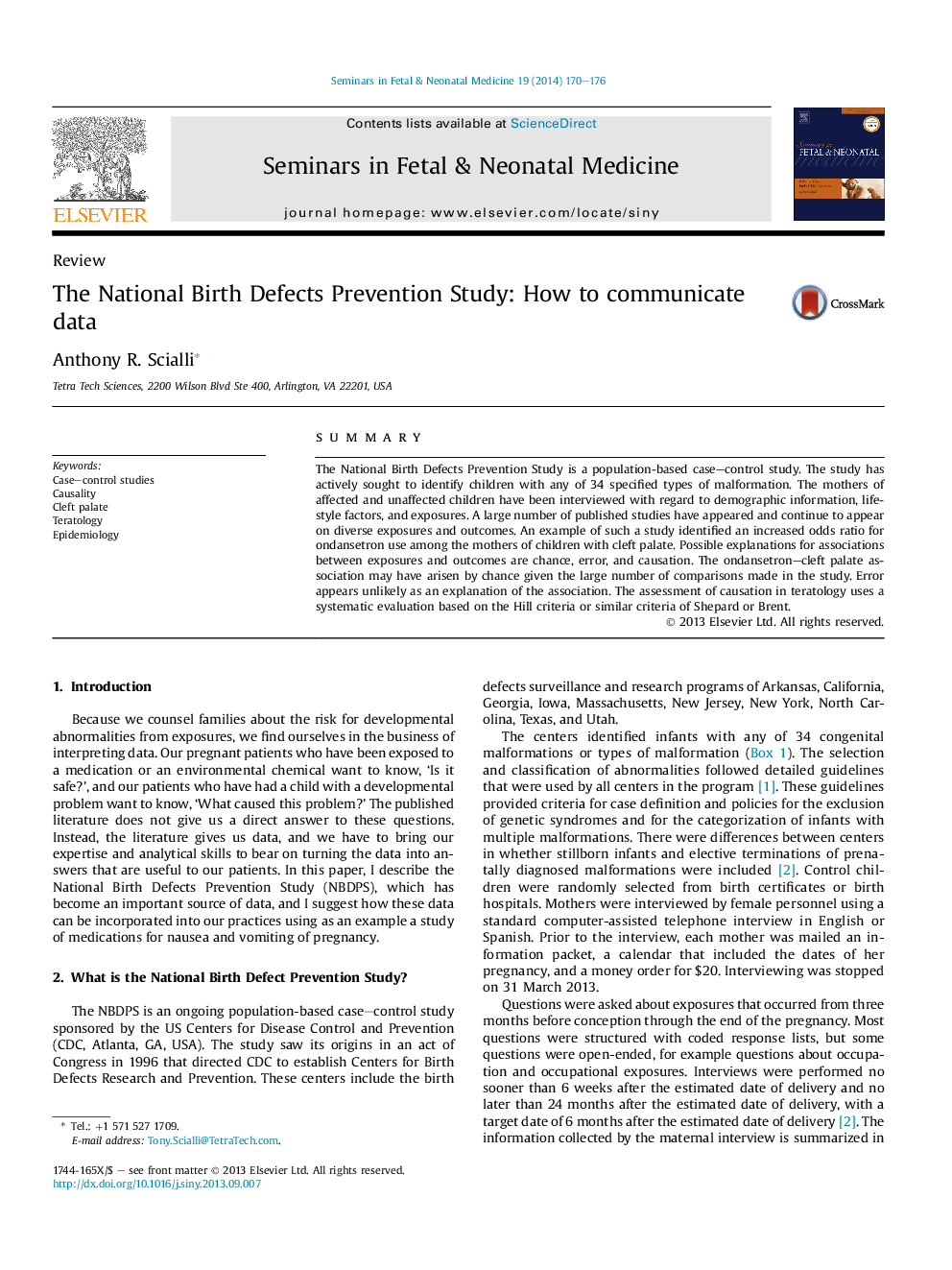| Article ID | Journal | Published Year | Pages | File Type |
|---|---|---|---|---|
| 3974250 | Seminars in Fetal and Neonatal Medicine | 2014 | 7 Pages |
SummaryThe National Birth Defects Prevention Study is a population-based case–control study. The study has actively sought to identify children with any of 34 specified types of malformation. The mothers of affected and unaffected children have been interviewed with regard to demographic information, lifestyle factors, and exposures. A large number of published studies have appeared and continue to appear on diverse exposures and outcomes. An example of such a study identified an increased odds ratio for ondansetron use among the mothers of children with cleft palate. Possible explanations for associations between exposures and outcomes are chance, error, and causation. The ondansetron–cleft palate association may have arisen by chance given the large number of comparisons made in the study. Error appears unlikely as an explanation of the association. The assessment of causation in teratology uses a systematic evaluation based on the Hill criteria or similar criteria of Shepard or Brent.
